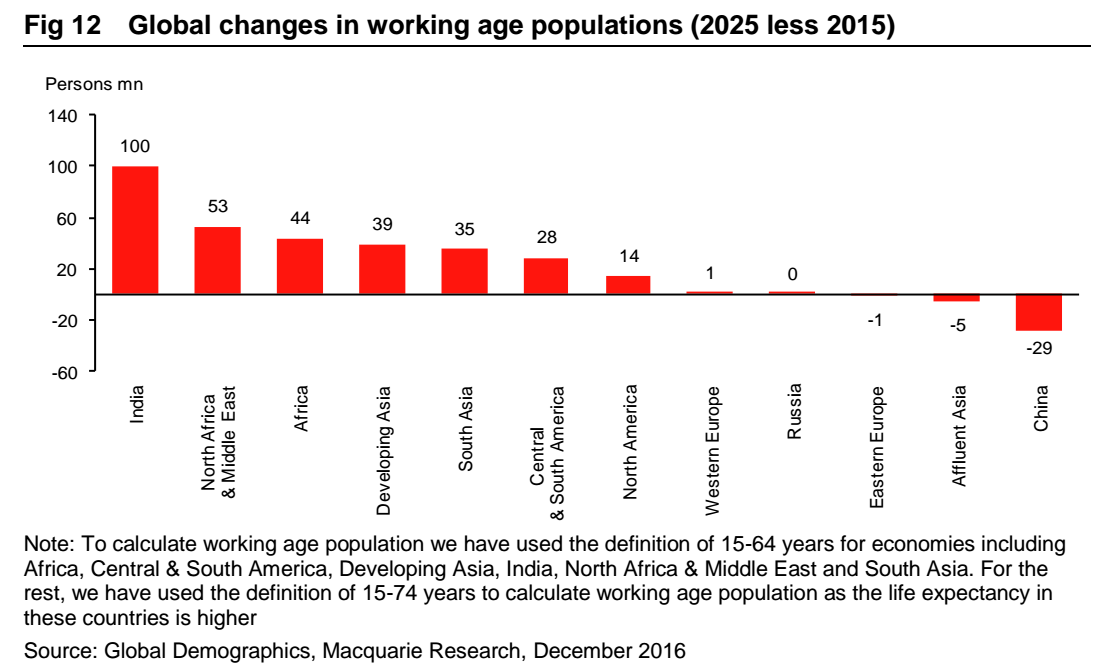Many countries face looming demographic issues as their populations age.
Much has been written about developed markets like Japan, Germany, and Italy, which have the largest percentages of their populations aged 65 and up.
But another country that also deserves attention is China.
In a recent note to clients, a Macquarie Research’s Peter Eadon-Clarke, Tanvee Gupta Jain, and Matthew Turner shared a chart showing their projections for changes in working-age populations between 2015 and 2025 for various countries and regions across the world.
China will see the greatest decrease in working-age population, according to their calculations.
(As an aside, this chart also shows huge projected increases in the working-age populations of India, North Africa and the Middle East, and Africa - which is essentially the opposite of what China will be seeing, and will come with its own set of challenges.)
Relatedly, a Bank of America Merrill Lynch team led by Beijia Ma shared a chart back in May showing that China's working-age population - aka people 15 to 59 - has already started shrinking.
The BAML team wrote in the note:
"For China to rise to be the world's #2 economy, the country saw its working-age population expand by 380mn people between 1980 and 2015. During this time, millions of people from rural China migrated to cities for urban manufacturing jobs. While this has pushed China to be the world's largest manufacturing economy in 2010, it is expected to peak in 2017."
But "by 2050, the size of China's population will decline by around 60mn, while the working-age population will decline by 212mn or around 1/3. This is the size of the current population of Brazil, the world's 5th most populous nation," they noted.

This is particularly startling given that China is also going to have a huge over-65 population in the near future in absolute terms - meaning that the country will see the same kinds of problems as aging developed markets like Japan, since fewer working-age adults will need to support more retired and elderly adults.
In March, a report on the global-aging phenomenon from the US Census Bureau illustrated some comparisons between China's over-65 population and the total population of several big developed markets:
- In 2015, the number of older people in China (136.9 million) exceeded Japan's total population (126.9 million).By 2030, Japan and Egypt's combined total projected populations (231.8 million) will be smaller than China's projected 65-and-up population (238.8 million).And by 2050, China's projected older population (348.8 million) will be approximately equal to the combined total projected populations of Japan, Egypt, Germany, and Australia.
The Census Bureau report also included population pyramids, which illustrate the sex and age breakdown of a country's population, for China in 2015 and 2050. The most striking thing in the charts is the huge growth in the over-65 category, which you can see below:

Another thing that stands out is the relatively small projected population of younger people in 2050, which is partially because of the one-child policy introduced in the late 1970s. And even thoughthe government recently retired it, the impact from that won't be seen for some time.

